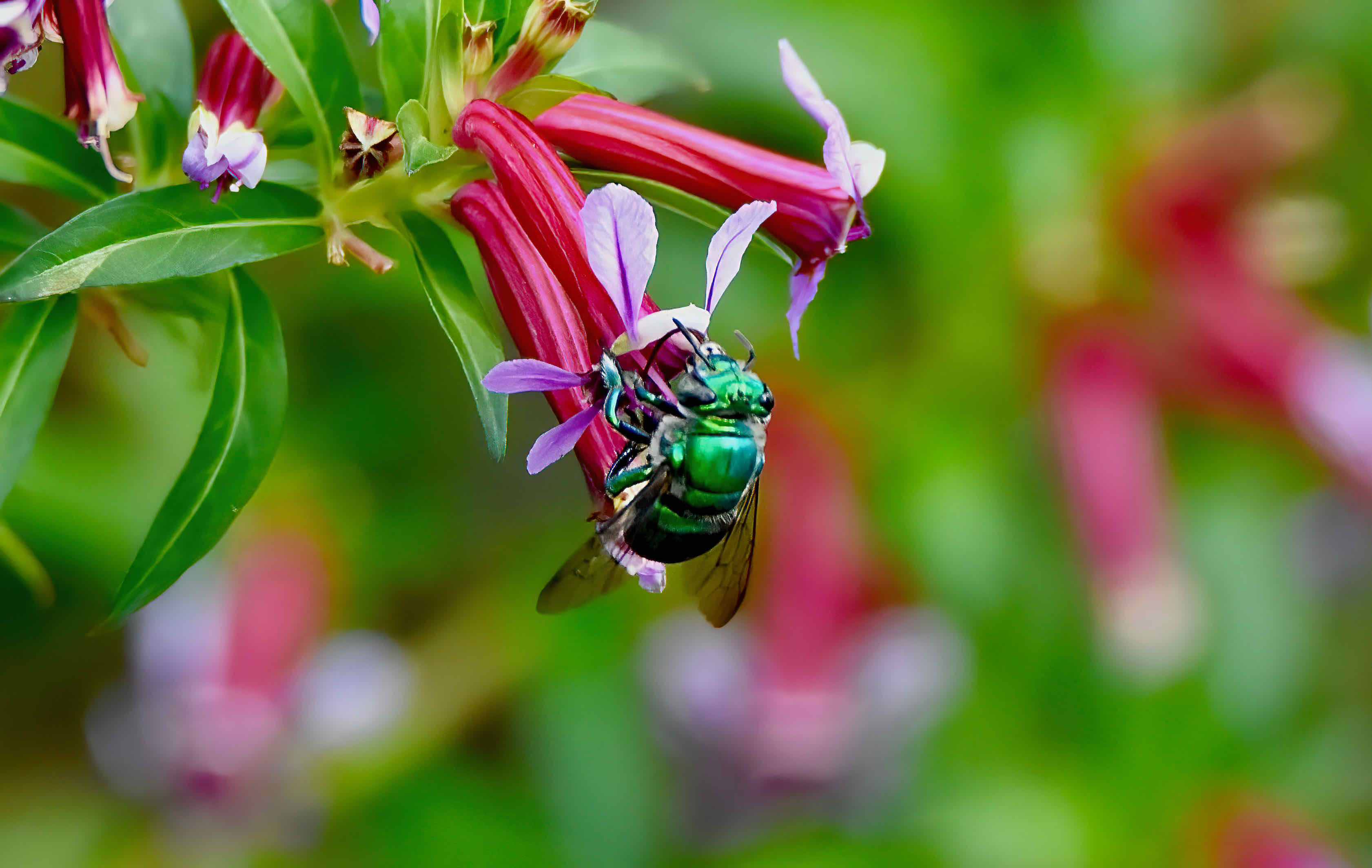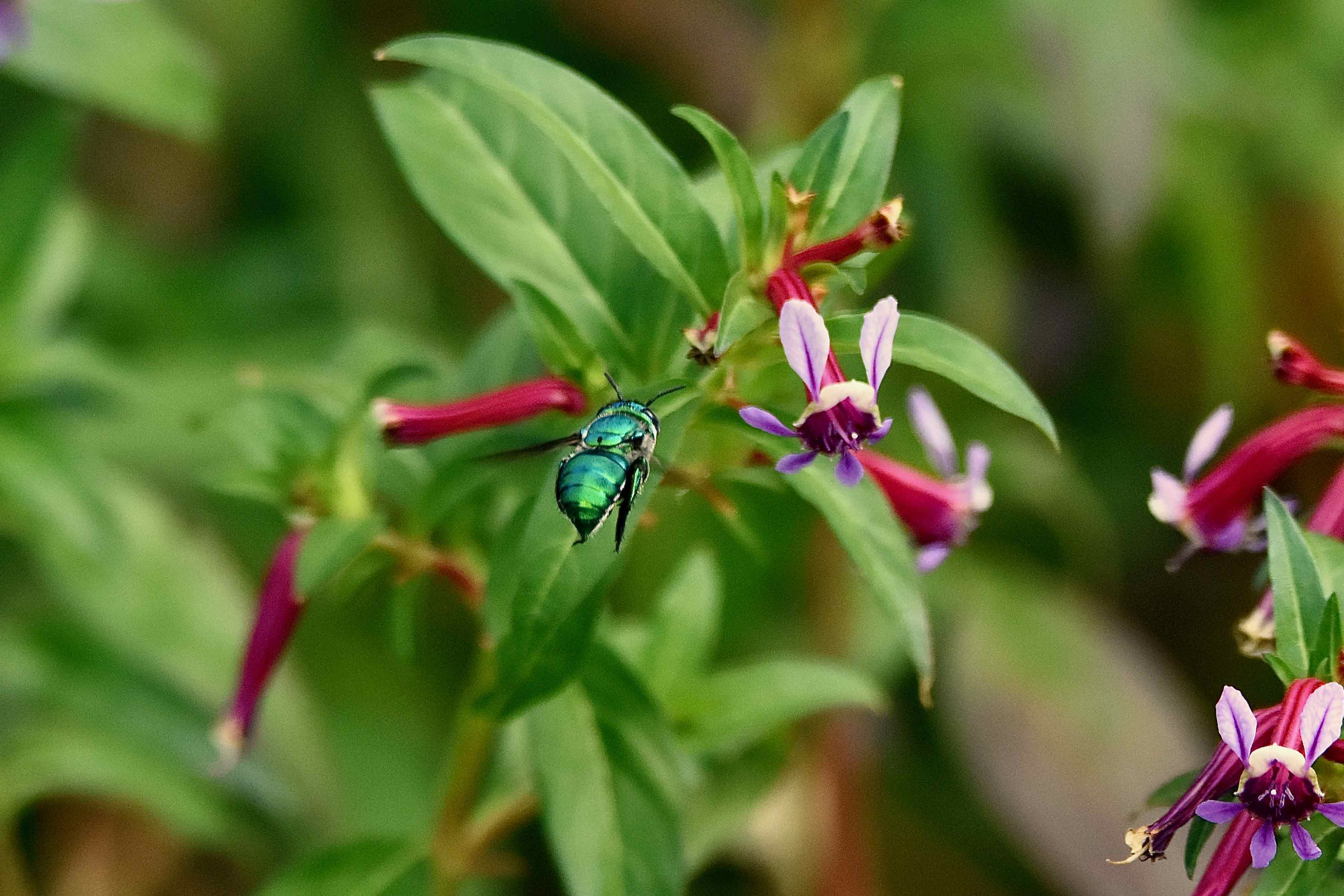
Green orchid bee, photographed at Daggerwing Nature Center, Boca Raton, Palm Beach County, in December 2018.
These bees are small, flying gems. And they have a backstory that is as extraordinary as their exotic looks. Hint: they're not from around here but they've called this part of Florida home for most of this century.
We're talking about the green orchid bee, Euglossa dilemma, a native of Mexico and Central America that has made its way to Broward County by accident, most likely a nest attached to a shipping pallet. They were first identified as Euglossa viridissima but later found to be a newly discovered relative, E. dilemma.
There are as many as 250 species of orchid bees, but none is native to the United States. In fact, our guy, the green orchid bee, appears to be the only species that's crossed the border into the U.S.
They are about the size of a honey bee and iridescent green. Their looks are similar to native Florida sweat bees, or halictids, with a few major differences. One is the tongue, which, on green orchid bees, extends about two-thirds the length of their bodies. The tongues on sweat bees are much shorter. They were first discovered in Broward County in 2003 and have spread to Miami-Dade and Palm Beach counties. Experts say the bees eventually could inhabit all of Florida south of a line drawn between Tampa and West Palm Beach.
What makes these bees extraordinary is their relationship with orchids. Each species of bee has its own species of orchid which the males use to pick up scents that attract lady orchid bees. The orchids, meanwhile, use the bees to pick up packets of pollen and transfer them from one flower to another.
Males gather the scent-producing chemicals from the orchid using their front legs, then hover for a bit while transfering the stuff to large, sponge-like structures on a section of their rear legs. Females don't have these structures; instead they have "baskets" in which they store pollen that they will use to "feed" their offspring. Males will present themselves to prospective mates by spraying their bouquet into the air and fanning it with their wings.
Female bees will reject males that are insufficiently scented or lacking the right combination of odors. Males will fight each other attempting to steal this love potion from each other. But the thing is the orchid species that the green orchid bee relies on doesn't grow in Florida, yet the bees are flourishing here. So what gives? Apparently, wood-rotting fungus. Males gather odors produced by rotting wood and decomposing vegetation as well as more conventional sources, like flowers and certain natural oils. Scientists have concluded that these bees don't need the orchids as much as the orchids need the bees.
Orchid bees are solitary; they don't nest in colonies but rather alone, with females finding a cavity or an enclosed space above ground to lay as many as 20 eggs individually in cells that are provisioned with pollen. Only the females have stingers; they are less likely to sting than honey bees and their stings are less painful. However, unlike honey bees, they can sting multiple times.
Green orchid bees are members of Apidae, the bee family.
Photo Gallery — Click on photo for larger image
Links for Green Orchid Bee
- iNaturalist.org: Dilemma Orchid Bees
- University of Florida Featured Creatures
- Orchid Bees are Critical to Conservation
- RachelMallinger Bug of the Week: Green Orchid Bee
- Establishment of the Neotropical Orchid Bee Euglossa Viridissima in Florida
- USDA Forest Service — Orchid Bees
- Orchid Bees Don't Need Orchids — USDA Agricultural Research Service*
- University of Iowa BugGuide: Green Orchid Bees



